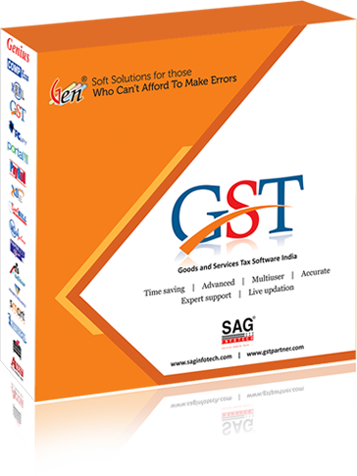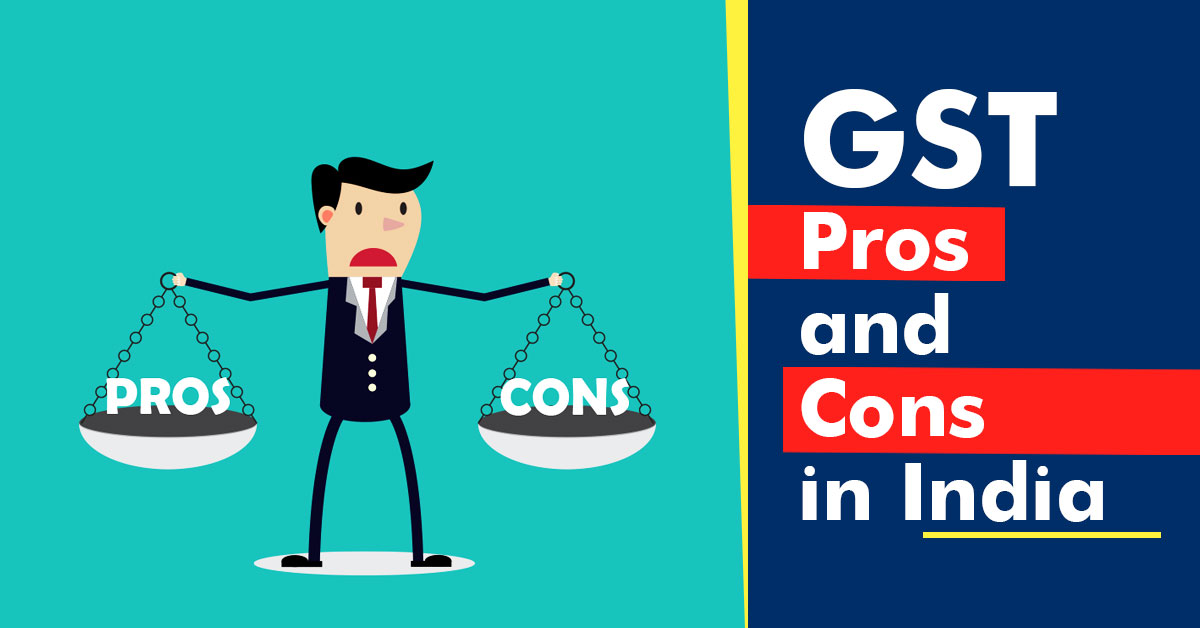Thinking about GST Pros and Cons? The Goods and Services Tax is a unified, destination-based tax that was implemented in India from July 1, 2017 to effectively replace all the existing indirect taxes, including service tax and vat. The GST has directly affected the businesses involved in the selling/buying of good and services, as well as consumers, in the country.
Whereas the prices of some goods/services have gone down, some other facilities have become costlier in the post-GST regime. There are some predefined tax rates for various commodities under GST and some basic items like food, milk, etc., have been kept tax-free, while petroleum products have not yet been included under the cover of GST. The impacts of GST are being noticed as we move forward into this new tax era.
Let’s discuss the major GST Pros (advantages) and Cons (disadvantages) we have experienced so far.
Positive Impacts (Pros/Advantages) of GST Implementation
- GST is expected to build a more transparent and corruption-free tax system in India.
- It is easy to start a business in the post-GST regime and tax regulations are easier than before.
- Composition mechanism is there to reduce the tax burden from small businesses and startups.
- Input credit (ITC) mechanism ensures an uninterrupted flow of cash for businesses and reduced price of goods/services for the end consumers.
- The merging of all the indirect taxes makes it easier to process the tax payment for the government as well as for the taxpayers.
- Tax harmonization
- More simplified movement of goods and/or services between states and within the country.
- GST is calculated on the total amount, irrespective of the type of sales and services.
- GST has eliminated the cascading effect of taxes by introducing a unified tax system.
- Since it is a destination based tax, the tax will only be paid by the consumer upon delivery of goods/services.
- The implementation of Goods & Services tax puts India in the line of international tax standards, making it easier for Indian businesses to sell in the global market.
- Inflation is expected to stay under control after the implementation of GST.
- GST is expected to reduce the price of production, operational and others costs that will benefit the end consumers.
- The cost of collecting the tax is reduced thus resulting in a higher revenue for the government.
- GST has the mechanism of integrated tax that makes sure that the tax burden is split impartially between manufacturing goods and services.
- The complexity of tax compliance is reduced as all the returns are being filed and taxes are being paid through a single platform.
- Since all the records and data are now available on a single platform, it has become easier for the tax authorities to identify and deal with tax evasions.
- One major benefit of GST is that the government is now receiving more taxpayer registrations than ever before.
Negative impacts (Cons/Disadvantages) of GST in India
As for the disadvantages, GST has a few. The implementation of GST in India has created troubles for some sectors by increasing the cost of manufacturing and/or supply or by reducing the value of the product. For example, the value of some second-hand items and refurbished items diminished due to the increased cost of processing or supply.
Let’s take a brief look at the disadvantages of GST, as reported so far.
- GST compliance and tax filing has increased the implementation cost for businesses, as they are required to invest in computers, accounting (GST) software and/or trained GST experts (CAs and accounting experts).
- The process of GST compliance is also proving daunting as most businesses are not yet fully aware of the rules, provisions and processes of the new tax system, including the process of return filing, GST registration, returns filing schedule, invoicing and billing, etc.
- The overall cost of doing business is going to increase, at least in the first few months of GST.
- The implementation of GST in the middle of the financial year is creating a lot of confusion among business, as to whether to follow the old tax rules or new ones or both.
- Many businesses, especially small businesses and startups, do not usually have the money or tech resources to get compliant with the digital GST system. A cloud-based (online) GST software like the Gen GST could be a perfect solution to this problem.
- The tax relaxation limit for small manufacturing businesses, which was 1.50 crores earlier, is now Rs. 20 lakh under the GST system. This has effectively increased the tax burden for such businesses.
- No clarification about tax holidays has further increased operation costs for textile, pharma and other manufacturing industries.
- The chaos among businesses has ended up creating a disruption in the industry.
- Consumers are not very hopeful about GST benefits and implementation and therefore, they are reluctant to adapt to the new system.
- The tax rate has been increased for many products, thus increasing their costs.
- Although there is a provision of input credit in GST, some businesses are not willing to pass on its benefits to their consumers.
- The cost of refurbishing has increased due to increased tax, thus increasing the price of refurbished products.
- Businesses are required to have separate registrations for multiple business entities in different states. It will increase the burden of tax compliance.
- GST has reduced the tax revenue of some states as they are now required to share revenues with the central government.
- The tax will be paid by the end consumer, which makes it a non-consumer-friendly tax system.
Conclusively, the GST has both its pros and cons, and it is expected to bring a positive change in the tax system of India. For now, we should hope for the best. Follow our GST Helpline for help and guidance regarding the implementation of GST.






